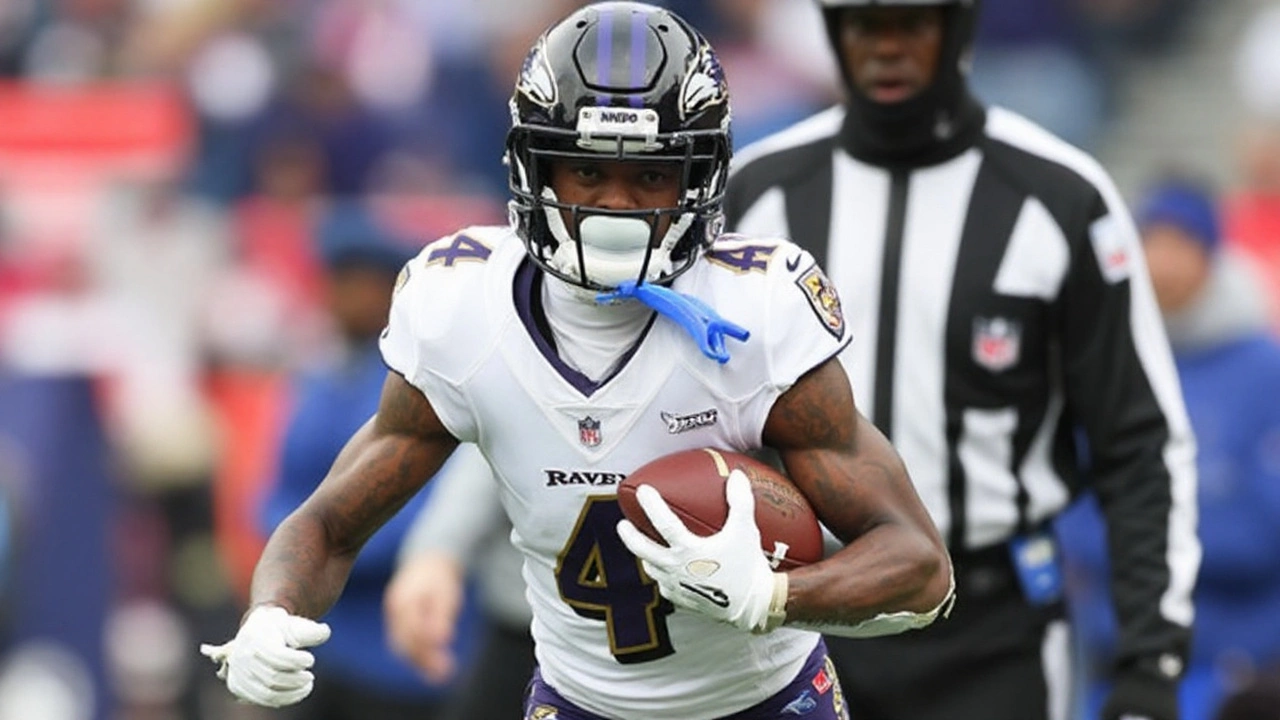Bills list six inactives, including Curtis Samuel and Tre'Davious White
Buffalo will start its 2025 season short-handed at two premium spots. The team declared wide receiver Curtis Samuel and cornerback Tre'Davious White inactive for Week 1 against the Ravens, with White sidelined by a groin injury. Also inactive: cornerback Jordan Hancock, offensive linemen Sedrick Van Pran-Granger and Chase Lundt, and defensive end Landon Jackson.
On the Baltimore side, the Ravens are without fullback Patrick Ricard and tight end Isaiah Likely, both of whom were listed as out on Friday. Ricard is a core piece of their heavy run looks, and Likely is a key depth target behind Mark Andrews.
The list matters more than it looks. On game day, teams can dress up to 48 players if they carry eight offensive linemen; otherwise it is 47. Who sits shapes personnel groupings, the special teams plan, and how coaches script the opening series. In short, the Buffalo Bills inactives tell us where the coaching staff expects to bend and where it hopes not to break.
Samuel’s absence trims Buffalo’s speed at receiver. He is a motion and spacing player who punishes off coverage and turns short throws into yards after the catch. Without him, expect Buffalo to lean more on layered routes from the slot and to funnel easy targets to the tight ends and backs. Dalton Kincaid has already shown he can be a volume option in the middle of the field, and running back James Cook is a steady outlet when the pass rush heats up. Buffalo can still manufacture the jet motion Samuel usually runs by using another receiver or a reserve back to force Baltimore’s defense to declare coverage and adjust leverage before the snap.
The offensive line picture is tighter with Sedrick Van Pran-Granger and Chase Lundt inactive. Van Pran-Granger’s ability to play center and guard gives the staff flexibility with protection calls in loud road environments. Without him, the interior trio has less room for shuffling if there is an in-game injury. That is notable against a Ravens front that loves to twist and mug the A-gaps to stress communication. Expect Buffalo to use more quick-game on early downs and mix hard counts and tempo to keep Baltimore from timing its pressures.
On defense, Tre'Davious White’s groin injury changes how Buffalo can play the edges of the field. Groin issues can sap a corner’s change of direction and top speed, and the staff will not risk that in Week 1. With White and rookie Jordan Hancock both inactive, the depth chart at outside corner gets thinner, which can force more zone coverage and bracket help on obvious passing downs. It also raises the pressure on the pass rush to compress the pocket quickly, because longer-developing plays are tougher to cover without a top veteran on the boundary.
Defensive end Landon Jackson being down trims the edge rotation. That often shows up in the fourth quarter more than in the first. Buffalo will likely ration pass-rush snaps early, sprinkle in simulated pressures, and pick its blitz spots to avoid wearing out its top rushers before the game’s last two drives. Edge setting will be a major theme given Lamar Jackson’s ability to turn broken plays into chunk runs.
Special teams always take a quiet hit on weeks like this. Inactives at receiver, corner, and along the line typically remove core kick and punt team players. Buffalo will need clean substitutions and disciplined lanes on coverage against a Ravens unit that regularly flips field position.

What it means for the matchup vs. the Ravens
For Josh Allen, the early script probably leans on rhythm throws, designed movement, and option routes that let his targets win with leverage rather than raw speed. Without Samuel, Buffalo can still stress the flat with tight end releases, quick outs, and swing passes to Cook. If the Ravens roll up to take away the short game, Allen’s pump-and-go shots off play-action become the counter. The balance here is avoiding long-developing concepts that invite Baltimore’s pressure packages to win.
Baltimore’s defense under an aggressive approach is built to create chaos with disguise and late movement. They will test the Bills’ interior communication on third-and-medium and tighten the screws in the red zone. The Bills can answer by changing the launch point—bootlegs, sprint-outs, and half-rolls—and by using tempo to limit Baltimore’s sub packages. Watch for 12 personnel with Kincaid on the field to force cleaner defensive looks and to help in protection against edge heat.
On the other side, Lamar Jackson puts unusual strain on a secondary that is down a starter. Baltimore can flood zones with Andrews and hit crossers behind play-action if Buffalo’s linebackers bite. That makes first-down defense a swing factor. If the Bills win first down and create second-and-long, they can sit in coverage shells, rally, and tackle. If they lose it, Baltimore’s full playbook—QB keepers, RPOs, and misdirection—comes alive.
Ricard’s absence is a quiet but real shift for the Ravens. Their heavy sets with a true fullback create angles and extra gaps that wear defenses down. Without him, Baltimore may show more 11 personnel with Andrews as the lone tight end, or use Charlie Kolar to keep some two-tight looks on the menu. That nudges the game toward space, which can help Buffalo if it tackles well and sets hard edges.
Situational football will likely decide it. Third-down offense for Buffalo comes down to staying ahead of the sticks and avoiding obvious passing downs where Baltimore can heat up the pocket. Third-down defense for Buffalo is about squeezing Lamar inside the numbers and forcing throws into tight windows. Red-zone trips need touchdowns; settling for field goals against a team that can score in bunches puts you behind the math.
Two small swing areas to keep an eye on: screens and quarterback runs. Screens are a good counter to blitz and can punish man coverage if the first block lands. Designed QB keepers for Allen can stress the edges and help loosen coverage, but they need to be timely to avoid hits piling up in Week 1.
Finally, early-season games often tilt on conditioning and ball security. Tackling form fades when legs get heavy, and one strip at midfield can flip momentum. With both teams missing useful role players, depth and discipline become the tiebreakers. Buffalo’s path is efficient offense, clean protection calls, and a pass rush that keeps Lamar in a cage. Baltimore’s path is pressure, field position, and explosive plays off play-action. The inactives sheet just told us which levers both coaches are most likely to pull.

Write a comment